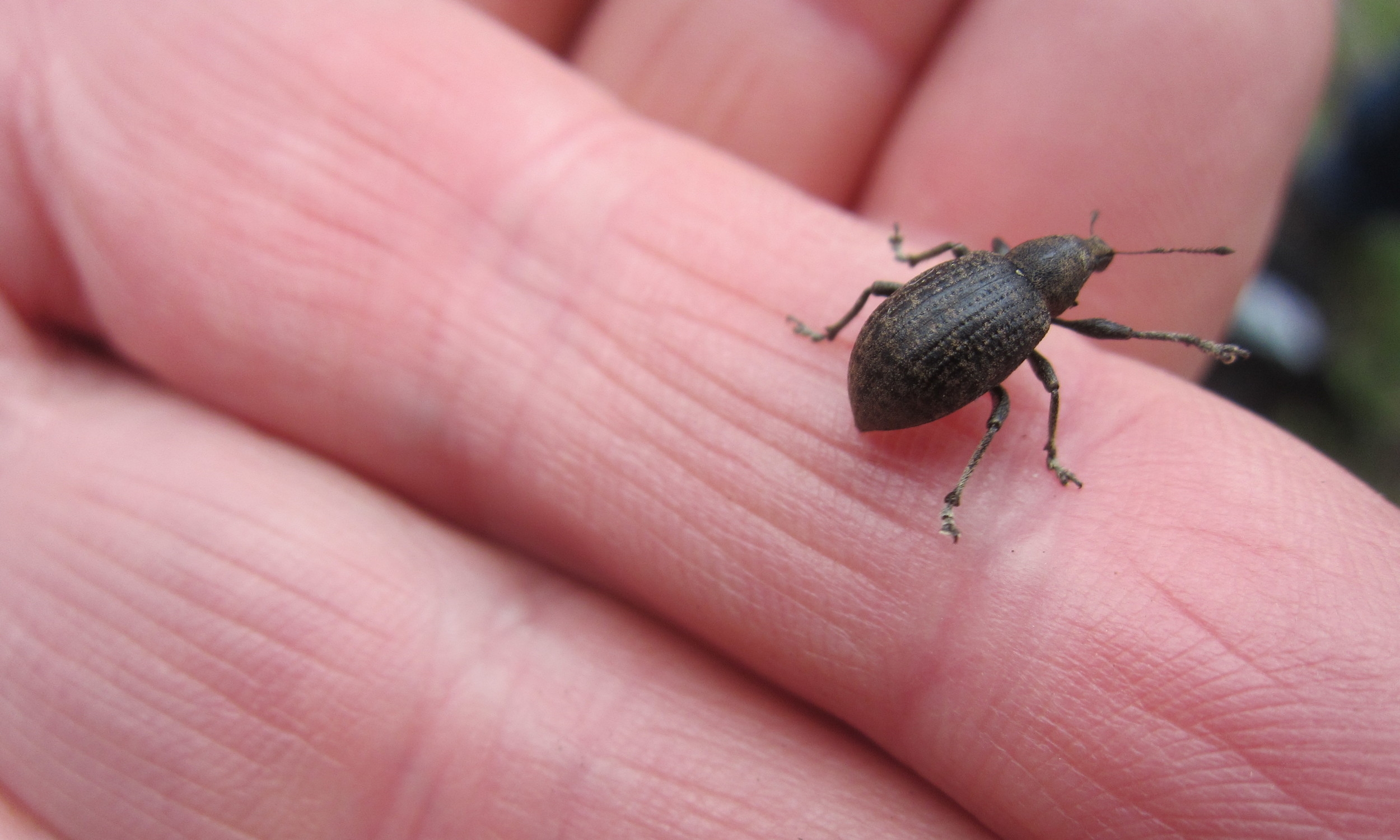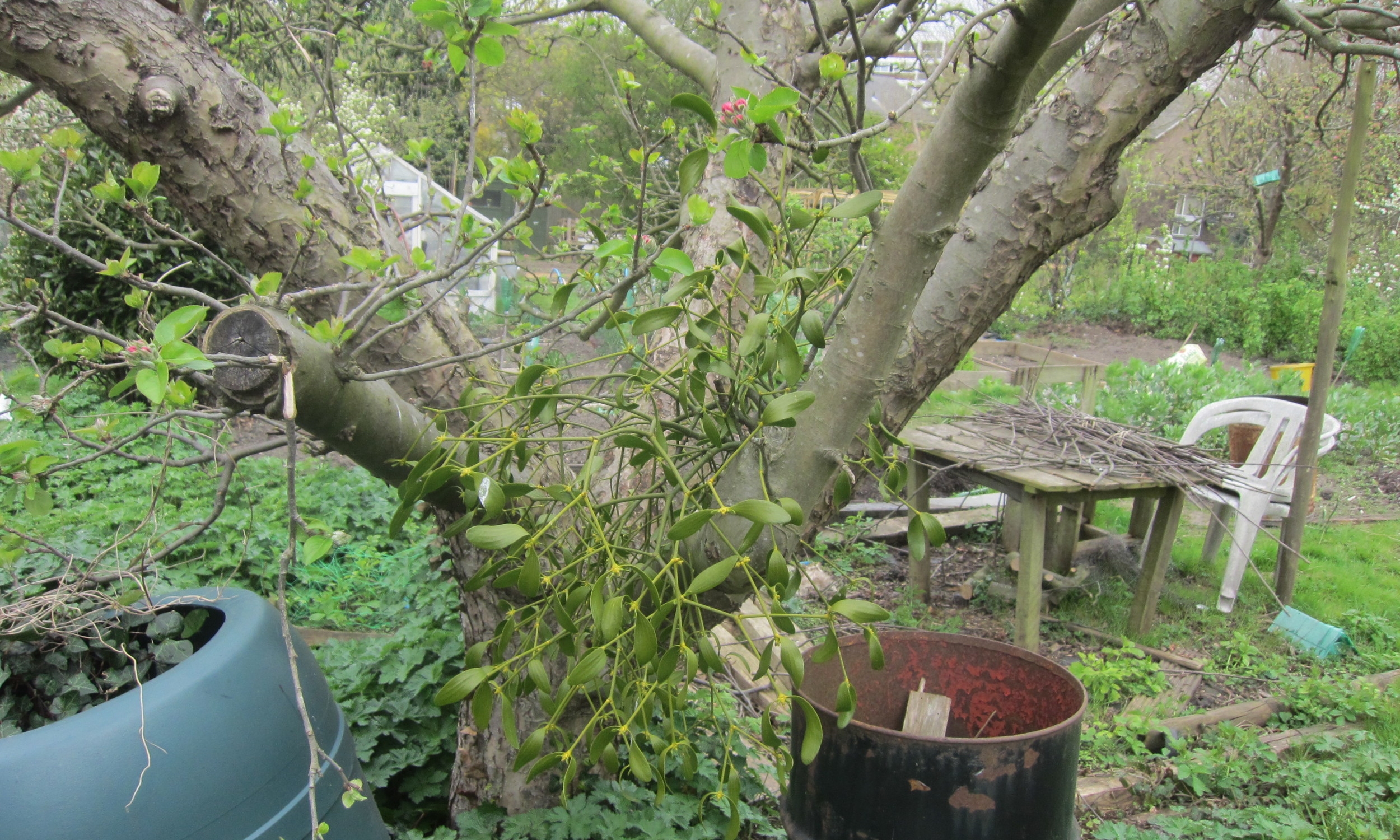A band of allotmenteers gathered by the gate on Sunday 26 April.. We weren't going far! We started by the large ivy covered plane tree by the wood chippings depot. A brief sweep with my sturdy net revealed a vine weevil that had been overwintering there, as a representative of the beetle order. Its habits, polyphagy as a grub in the roots of your pot plants is notorious. Its parthenogenic reproduction (no mating required) led to discussions on female power etc!
Then we moved up the concrete path looking at and identifying the wild plants or weeds, depending on your point of view or their context. Their edibility was tested and we discussed the fact that they more or less look after themselves, needing far less attention than our crops. Garlic mustard was a hit and is also the foodplant of the Orange Tip butterfly. That gem was not yet in evidence, but did appear the next week. The male has the eponymous orange tipped wings, but the female is plain white. Neither will eat your cabbages, but it is related to the large and small white that do. Look out for its orange, narrow barrel- shaped egg soon.
We proceeded to have a look at the wild plant border to the communal plot lawn. Some of the introduced plants were being swamped by nettles and so some help could be in order. However it is difficult to prescribe the best management, since the nettles could be host plant to the butterflies such as the small tortoiseshell, peacock and red admiral a bit later on. Maybe diversity could be aimed for to end up with a mix. Diversity in principle is best but context can also be important. Various comments were passed on a small nettle weevil, tiny relative to the vine weevil, called Apion urticae, a nationally rare species that turned up in one of my sweeps.
In examining aphids on the sycamore shoots and their ant farmers that milk them for honeydew, we witnessed again the marvels of nature. So much yet to discover and try to work with!
Another discovery was mistletoe that one of our band knew about on an apple tree. This is very rare in Haringey. There were only two known sites and one of these was lost a few years ago, so finding a replacement was quite welcome.
We left it at that and I went chasing up a large grub from Karen's compost heap that turned out to be the Rose Chafer. A beautiful metallic bottle green beetle that is rarely seen in Haringey.



Dan Hackett


